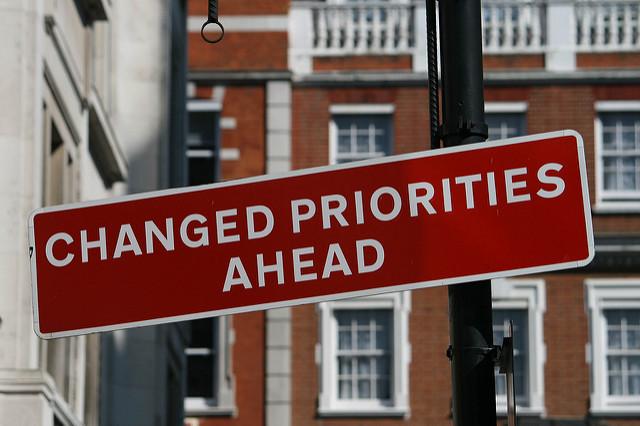A post-alliance US?
Posted By Rod Lyon on July 3, 2018 @ 06:00

President Donald Trump’s disdain for alliance commitments suggests that we might be heading into a new era in geopolitics—an era characterised by a post-alliance US. While US allies will be hoping fervently that that isn’t the case, it probably makes sense to think through some of the ramifications of that scenario.
True, the Trump administration continues to emit a range of conflicting signals about alliances. Within the pages of the National Security Strategy (PDF [1]) and the unclassified summary of the National Defense Strategy (PDF [2])—the formal documents underpinning declaratory strategy—allies are seen as positive contributors to US security. Yes, the documents continue to expound Trump’s point about the need for allies to carry more of the weight. See, for example, page 28 of the NSS: ‘We need our allies … to modernize, acquire necessary capabilities, improve readiness, expand the size of their forces, and affirm the political will to win.’
But the dominant picture is that the current US alliances are an enabler, an asymmetrical strength in the emerging environment of competitive great-power relationships. Broadly speaking, the US has allies while Russia and China don’t.
Unfortunately, the president seems not to share that view. Reports of his conversation [3] with Swedish Prime Minister Stefan Löfven in March suggest that the president was envious of Sweden’s relationship with NATO—as a partner of the alliance rather than as a member of it. If true, that approach reflects something more than a concern about equitable burden-sharing: it suggests, in particular, a wish to avoid the automaticity of commitment that goes with NATO membership and Article 5 commitments.
It doesn’t, of course, necessarily mean an isolationist America. Even a post-alliance America would still have interests abroad. And the current US and Australian celebration of their ‘100 years of mateship [4]’, dating from their cooperation at the Battle of Hamel in World War I, is clearly freighted with a range of messages that Canberra hopes to send to Washington: in particular, that America had an important global role, and Australian–US defence cooperation a history, before the post–World War II alliances came along.
But a more voluntarist approach to US strategic engagement would certainly mean a radical rethink by US allies of their own strategic futures. After all, the current alliance system is predicated on US engagement. In his post [5] last week, Dominique Moisi drew the important distinction between US disengagement from NATO and one of the other members doing the same: ‘A sheep gone astray is one thing; if the shepherd leaves, the entire herd is at risk.’
At the risk of losing some of the elegant simplicity of Moisi’s metaphor, let’s concede that the shepherd has more than one flock. Some Europeans worry about the relative importance of NATO as Asia grows steadily in wealth, power and strategic importance. So it’s possible that the shepherd is merely rationalising priorities here.
But is that the real basis of Trump’s disdain for NATO? He honestly doesn’t seem to be more attracted to the US’s Asian allies than its European ones. Indeed, if the NATO summit in Brussels on 11–12 July goes badly, it will send a fresh wave of concern through Japan, South Korea and Australia about their own alliances, not a sense of relief that the increasing strategic importance of Asia helps make them safe. That’s because the US is even more central to its Asian alliances than it is to NATO. The San Francisco system is not called the ‘hub-and-spokes’ model for nothing.
Moreover, US allies in Asia live in closer proximity to radical and adverse power shifts than their European counterparts—and their doing so has a wonderful way of concentrating the mind. Yes, President Vladimir Putin is pushing the risk envelope in Europe, especially in regard to the Baltics, Ukraine and the Black Sea [6]. And those are genuine issues for the NATO summit to address. But today’s Russia is a weaker power than yesterday’s Soviet Union. By comparison, today’s China is a—much—stronger power than it was in Cold War days.
So if the US does seem to be headed into a post-alliance age, it would be reasonable to expect a more substantial reorientation of US allies’ defence policies to unpack in Asia, not in Europe. Each of the Asian allies is more singularly dependent upon the US than any of its 28 NATO allies. If Japan and South Korea both feel a necessity to contemplate a Plan B for their strategic futures, we should brace for radical options in Northeast Asia. Moreover, we’d need to do a root-and-branch rethink of our own strategic future here in Australia.
Having America as merely an intermittent partner and not a committed ally would—and should—force a serious reconsideration of our options.
Article printed from The Strategist: https://aspistrategist.ru
URL to article: /a-post-alliance-us/
URLs in this post:
[1] PDF: https://www.whitehouse.gov/wp-content/uploads/2017/12/NSS-Final-12-18-2017-0905.pdf
[2] PDF: https://www.defense.gov/Portals/1/Documents/pubs/2018-National-Defense-Strategy-Summary.pdf
[3] his conversation: https://www.businessinsider.com.au/trump-reportedly-is-joking-about-pulling-the-us-out-of-nato-2018-6?r=US&IR=T
[4] 100 years of mateship: https://usa.embassy.gov.au/mateship
[5] post: /the-transatlantic-rupture/
[6] the Baltics, Ukraine and the Black Sea: http://www.atlanticcouncil.org/blogs/ukrainealert/forget-defense-spending-debates-here-s-what-nato-summit-should-focus-on
Click here to print.